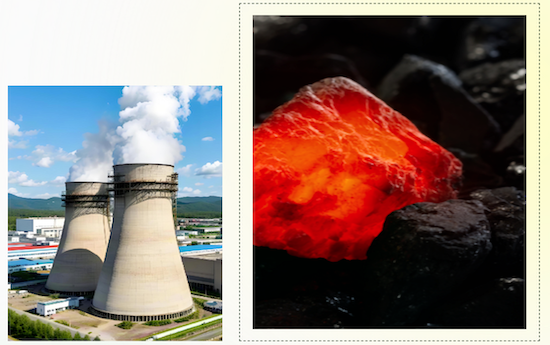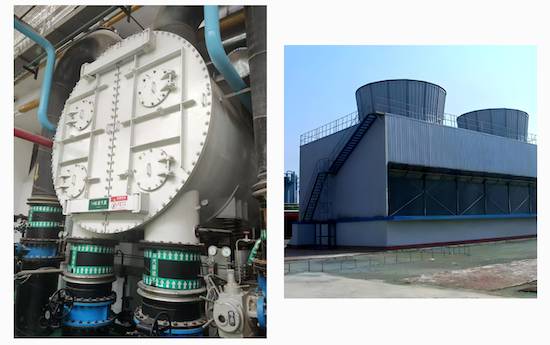
media coverage
In modern coal chemical production, the circulating water system is entrusted with cooling more than 90% of heat exchange equipment, making it a cornerstone of safe and efficient plant operation. Yet, the complex water quality conditions in this sector - characterized by high ammonia nitrogen levels, abundant coal dust, and pronounced corrosivity - pose far greater challenges for operation and maintenance than those found in conventional industries. The national standard GB/T 50050-2017 Design Code for Industrial Circulating Cooling Water Treatment provides a critical technical foundation, defining treatment requirements and establishing a framework for managing high-load operating conditions. Building on this standard and extensive field practices, this article highlights five essential strategies for operation and maintenance, offering practical solutions to persistent problems such as scaling, corrosion, and microbial proliferation, and thereby supporting the sustainable and reliable development of coal chemical enterprises.

01. Stricter Water Quality Control Beyond Standards
Turbidity Control
- Standard requirement: ≤20 NTU
- Coal chemical practice: ≤10 NTU
Coal dust and catalyst particles easily accumulate in circulating water. If turbidity exceeds the limit for three consecutive months, heat exchangers may become clogged, leading to reduced heat transfer efficiency.
Hardness and Alkalinity Management
- Combined calcium hardness + total alkalinity: ≤1100 mg/L (as CaCO₃)
- Coal chemical recommendation: Maintain calcium hardness ≤200 mg/L when water-side wall temperatures exceed 70 °C.
- Langelier Saturation Index (LSI): Maintain between –0.3 and +0.3 to prevent carbonate scaling.
Ammonia Nitrogen and Chloride Control
- Ammonia nitrogen: ≤10 mg/L to prevent nitrifying bacterial growth, sudden pH drops, and accelerated corrosion.
- Special case (copper heat exchangers): Ammonia nitrogen in make-up and circulating water ≤1 mg/L to avoid complexation reactions.
- Chloride ions: ≤700 mg/L to ensure corrosion rates remain ≤0.075 mm/a for carbon steel and ≤0.005 mm/a for stainless steel and copper.
Practical Monitoring Recommendations
- Daily tests: Turbidity, pH, calcium hardness, total alkalinity, chloride, total iron.
- Every three days: Ammonia nitrogen.
- Monthly laboratory tests: Corrosion and scaling rates, ensuring carbon steel ≤0.075 mm/a, stainless steel and copper ≤0.005 mm/a, and fouling thermal resistance ≤3.44 × 10⁻z m²·K/W.
02. Mandatory Cleaning and Pre-Filming Before Startup
When a coal chemical circulating water system is newly commissioned or restarted after maintenance, residual welding slag and oil contaminants on equipment surfaces can easily become breeding grounds for scaling and corrosion. Section 3.3.6 of GB/T 50050-2017 specifies the procedures for cleaning and pre-filming. Considering the characteristics of coal chemical equipment, two critical steps must be emphasized:
Two-Step Cleaning Process
- Mechanical Cleaning: During maintenance, inspect heat exchangers first. For units with heavy sludge deposits, perform high-pressure water jet cleaning at 10–20 MPa to remove sediment from tube bundles.
- Chemical Cleaning: After mechanical work is completed, carry out system-wide chemical cleaning. Add an acid cleaning corrosion inhibitor at 100~200 mg/L, circulate for 2~3 hours, and then gradually introduce sulfuric acid, adjusting pH to 3.0–5.0 as required to remove rust formed by metal oxidation. Upon completion, discharge and replace water until pH is neutral or higher, turbidity ≤20 NTU, and iron concentration ≤1 mg/L, indicating successful cleaning.
Post-cleaning, corrosion products are effectively removed. According to HG/T 3778-2005 Technical Code for Chemical Cleaning and Pre-Filming Treatment of Cooling Water Systems, the average corrosion rate measured by coupon monitoring should be ≤3 g/(m²·h) for 20# carbon steel and ≤0.5 g/(m²·h) for stainless steel and copper alloys. For single heat exchanger acid cleaning, sulfamic acid may be used, maintaining pH between 1.0 and 3.0.
Pre-Filming to Ensure Long-Term Protection
The objective of pre-filming is to form a dense, protective film on freshly cleaned metal surfaces, enhancing resistance to corrosion. Depending on discharge requirements, either phosphate-based or non-phosphate film-forming agents may be applied, with zinc salts as an additive option. Recommended operational parameters include:
- Calcium concentration (as CaCO₃): 80~100 mg/L
- Total iron: ≤2 mg/L (preferably ≤1 mg/L)
- Turbidity: ≤20 NTU (preferably ≤10 NTU)
- pH: 6.0~8.0
- Temperature: 30~40 °C
- Pre-filming duration: 48~72 hours
A successful pre-filming process is confirmed when carbon steel coupons show no rust, exhibit visible iridescence under sunlight, and pass the “film-break test” using a solution of 15.0 g NaCl and 5.0 g CuSO₄·5H₂O in 100 mL distilled water, with a color-change time exceeding 10 seconds.
03. Precision Chemical Dosing in Operation and Maintenance
Chapter 8 of GB/T 50050-2017 stipulates that “the dosing system shall ensure uniform and stable chemical addition.” However, given the significant fluctuations in coal chemical circulating water quality, more adaptive dosing strategies are required, rather than rigid application of standard parameters.
Selecting the Right Chemicals
Corrosion Inhibitors:
- For closed systems, molybdate- or nitrite-based inhibitors are recommended.
- For open systems, zinc salts combined with phosphate formulations are commonly used.
- Where copper heat exchangers are present, specialized copper corrosion inhibitors must be applied.
Scale Inhibitors:
- For high-hardness water, acrylic acid terpolymer inhibitors are preferred due to superior dispersing performance. Dosage should increase by 2~3 mg/L for every 100 mg/L increase in hardness.
- For low-hardness water, organophosphorus scale inhibitors are more suitable.
Biocides:
- Sodium hypochlorite is the most widely used, though sodium dichloroisocyanurate and trichloroisocyanuric acid are also applied.
- With sodium hypochlorite, two dosing modes are adopted:
- Continuous dosing: Maintain residual chlorine at 0.1~0.5 mg/L.
- Shock dosing: Ensure residual chlorine remains at 0.5~1.0 mg/L within 3 hours post-dosing.
- Non-oxidizing biocides such as isothiazolinones (1.5% concentration) are also employed, typically at 100~150 mg/L based on system water volume.
Ensuring Precise Dosing
- Install online monitoring instruments for pH, ORP, and turbidity, integrated with dosing pumps (e.g., automatic alkali dosing when pH < 7).
- Calibrate dosing metering pumps weekly to ensure an accuracy deviation of ≤5%, in compliance with Section 5.2.2 of the standard.
04. Targeted Equipment Maintenance for Vulnerable Components
In coal chemical circulating water systems, heat exchangers and cooling tower fill are highly susceptible to corrosion, leakage, clogging, and aging due to prolonged exposure to heavily polluted water. According to GB/T 50050-2017, Section 6.2.1 “System Operation and Maintenance”, targeted maintenance mechanisms should be established.
Heat Exchangers
- Most exchangers are not equipped with standby units, except for certain high-position, high-temperature, and high-corrosivity applications. As a result, maintenance and offline cleaning are typically restricted to scheduled plant shutdowns. (Recommended frequency: once every 12~24 months).
- After cleaning, hydrostatic testing should be conducted at 1.5 times the design pressure. Annual corrosion rates for carbon steel tubes should be controlled within 0.1 mm/a. For severe corrosion conditions, increase inspection frequency and adopt coupon-based online monitoring with regular sampling and analysis.
- In cases of sudden scaling or corrosion that cause rapid performance decline during operation, when shutdown is not feasible, emergency measures such as shock flushing at the circulating water inlet or online acid cleaning can be employed.
Cooling Towers
- Inspect fill quarterly for coal dust, sludge, and microbial deposits. If high-pressure water jet cleaning is required, pressure must not exceed 0.8 MPa and should not be performed during operation.
- Test circulating water weekly for Legionella concentration.
- Conduct monthly disinfection using shock dosing of sodium hypochlorite to maintain effective chlorine levels and ensure sufficient contact time.
- If excessive deposits are detected, adopt a “biocidal treatment followed by chemical stripping” procedure to achieve thorough cleaning.

05. Rapid Response in Emergency Handling
In coal chemical production, changes in feed coal quality or fluctuations in gasification units can cause sudden shifts in circulating water quality. According to GB/T 50050-2017, Chapter 9 “Emergency Handling”, a rapid response mechanism must be established.
Sudden Increase in Ammonia Nitrogen (>10 mg/L)
- Emergency control should be combined with long-term source mitigation. Upon detecting an exceedance, immediately identify and isolate the pollution source, divert high-concentration wastewater to an emergency tank, and optimize the operation of the biochemical treatment system.
- Maintain dissolved oxygen at 2~4 mg/L, adjust pH to 7.5~8.5 using sodium carbonate, and supplement carbon sources as needed to stabilize water quality. Long-term mitigation requires upstream implementation of clean production and emission reduction.
- For high-ammonia wastewater, pre-treatment via stripping or air stripping is recommended. Biochemical processes (e.g., MBBR, A²/O) can be modified, and efficient nitrifying bacteria may be added to enhance nitrogen removal. If necessary, advanced oxidation or membrane treatment units can be installed downstream to ensure stable compliance.
Chloride Ion Exceedance (>700 mg/L)
- Immediately increase blowdown volume (concentration factor ≤2.5) and supplement with fresh water.
- Monitor corrosion rates of carbon steel equipment; if rates exceed 0.125 mm/a, increase corrosion inhibitor dosage by 50%.
- Investigate sources of chloride ions, such as coal quality changes or desalination unit malfunctions, and implement source control measures to prevent recurrence.
For coal chemical enterprises, the operation and maintenance of circulating water systems is not only a matter of regulatory compliance but also a critical factor in reducing production costs and ensuring long-term, stable operation of process units. As the coal chemical industry accelerates its transition toward a “green and low-carbon” future, the demands on circulating water systems for water conservation, emission reduction, and energy efficiency are increasing.
It is recommended that enterprises base their strategies on GB/T 50050-2017 while developing tailored operation and maintenance programs suited to their specific operating conditions. The integration of online monitoring and intelligent chemical dosing technologies can further enhance the role of circulating water systems as a “production stabilizer.”
POLYMER possesses extensive practical experience and proven cases in coal chemical circulating water operation and maintenance. Leveraging the GB/T 50050-2017 standard and aligning with individual plant conditions,POLYMER provides end-to-end solutions, from water quality monitoring and chemical adaptation to emergency handling-empowering enterprises to achieve both stable circulating water system operation and improved cost efficiency.